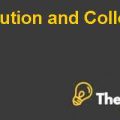
1. What are the principal elements of the Toyota Production System? What capabilities must an organization possess in order to implement TPS effectively?
The Toyota production system is comprised of two main guiding principal elements that will prove helpful in the facilitation of critical processes. The first principal element that was of great importance in Toyota production system was the adoption of Just in time approach under which the cars were only produced at the time when they were needed and the material that has to be used was also specified in this process in order to avoid any problems with regards to wastage.
Moreover, this principle also focused on the wastage that was related to the transportation as well as the wastage from production. Despite this, the second most important principal element of Toyota production system is Jidoka which is mainly focused over taking care of the quality at the source before the product has been delivered to the customers.
In addition, this is among the major JIT principles because it entails the correction as well as the identification of hurdles at the time of production in order to avoid the loss of customers and revenues. Jidoka also includes the quality control and inspection of the manufacturing process and the responsibility with regards to quality is placed on everyone inside the organization.
Furthermore, in order to implement TPS effectively an organization will have to maintain strong and long lasting relations with its suppliers because under the JIT approach the production only started at the time when the customer places an order. Hence, after the placement of an order an organization should have the capability to have a backup at the organization in order to avoid any problems with regards to the loss of sales. It should also possess the latest technology and an experienced staff at the organization in order to retain the level of quality that they were able to maintain for so long. On the other hand, an organization must have the capability to have sufficient amount of financial resources in order to carry out manufacturing effectively.
2. As Doug Friesen, what would you do to address the seat problem? What options exist? Where would you focus your attention and solution efforts? What would you recommend? Why?
First of all the point that is to be addressed is to find an actual reason behind the existence of the problem. Hence, by taking account of the defect data from exhibit 8 which involves the identification of 5 seat defects that is constituted of almost 87% of the rejected seats from 14th April up to 30thApril.
So Doug Friesen should undertake the option of gathering the cross-functional team of KFS and TMM employees from several disciplines in order to address the seat problem as well as ascertaining the number of And on pulls that was related to the rear seat selection on the right and left side that is almost more than 3 to 6 times higher in some of the cases.
Moreover, after identifying the problematic areas like material flow, seat bolsters broken and the missing part as well as the seat back broken will prove helpful in addressing these issues. Therefore, Doug Friesen will have to keep his attention and the solution efforts on the rear seat installation station as compared to the front seat installation and this may also be linked to the prospective team members who are rotated into the area at the start of April.However, the reason behind recommending this approach is based upon the determination of the root cause of the defect that took place because this will be the only way which will prove beneficial for accurately addressing these issues so they do not occur again in the future.TOYOTA MOTOR MANUFACTURING, U.S.A., Inc. Case Solution
3. Can an operating system like TPS lead to sustainable competitive advantage? How easy or hard would it be for another organization to copy TPS?
Yes, the operating system like Toyota production system can lead to the sustainable competitive advantage because, beyond merely the reduction of costs and bringing improvements in the efficiency this production technique includes the introduction of systems as well as the development of skills with the staff that will provide support with regards to the changes in the work place.
Hence, if Toyota will be able to maintain its performance in the long term and can keep its customers satisfied, then it can rule over the market by being a market leader.Despite this, the imitation of the Toyota production system may or may not be easy for another organization which is operating in the same industry sector...............................
This is just a sample partial case solution. Please place the order on the website to order your own originally done case solution.













